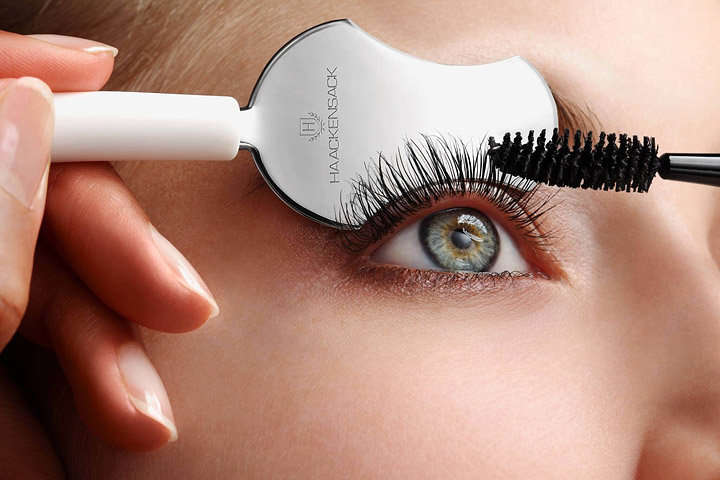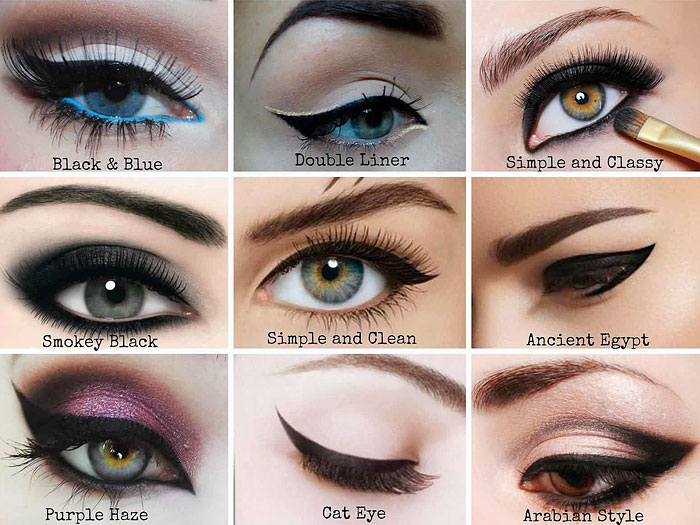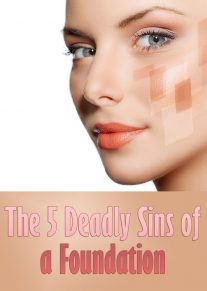
Eyeshadow is a must for any makeup routine, even for the nude look. Yet, are we sure we know exactly how to properly apply it and what colors are the best for us? Some say blue hues are a huge no-no, but others disagree. Some say you should match the color of your shadow to the color of your eyes but that’s also debatable. Here are some makeup tips and tricks to use when you apply eyeshadow.
1. Get a brush
Foam applicators come with the palette but they’re not the best tool to use. Brushes are gentler and make it easier to blend the colors.
2. Use instead of eyeliner
You can successfully use a dark eyeshadow instead of a pencil or a liquid eyeliner. What you need is an angled brush to apply it along the edge of your lids. Smudge a bit if you want that seductive “messy” effect.
3. Anything goes with the almond-shaped eye
Almond-shaped eyes are great for any colour combination, especially the smoky eye. Choose a couple of shades from the same palette, one lighter, the other darker. The darker goes on the lids, up to the crease, and the lighter goes above it.
4. Just a dash for round eyes
Round eyes, as well as eyes with hooded lids, don’t require too much in the eyeshadow department. For the former, use just one color and use it sparingly. For the latter, opt for something that will open up the eye, such as eyeshadows in hues lighter than your skin.
5. Three shades for narrow eyes
Narrow eyes could do with some additional depth, so blend three colours from one palette, with the darkest going the lowest, that is nearest to the edge of your lids, followed by the medium hue and then the lightest at the top.
6. Easy on the contrast
The fairer your skin, the more careful you should be with deep, dark eyeshadows. Although contrast is sometimes exactly what you need, this is mostly true for heavy, theatrical makeup. For every day you’d better stick to the paler, more natural looking hues.
7. Dark and dramatic
For those among us with darker skin, deep hues are the best choice. After all, the purpose of the eyeshadow is to complement the face, not stand out on its own. So, as fair skin goes well with pale shadows, dark goes wonderful with deep ones.
8. Using just one color
For this, you can use either a wide brush or your fingertip. Apply from the edge of your upper lid to a few millimetres above the crease. Start at the lid, to make sure that’s where the most of the eyeshadow will go. The higher, the less shadow.
9. Two-color blending
You can either combine a neutral shade, close to your skin tone, with a darker or brighter one, or you can blend two hues from the same palette. First apply the lighter, and then the darker one. Blend with your brush, so there’s no sharp line between the colors.
10. Three-color blending
This is basically the same as two-color blending. The key is to make sure that the colors merge into each other flawlessly, and that’s why using a brush is so important.
11. Make it last
In addition to using high-quality eyeshadows, rather than cheap low-end ones, one other way to ensure durability is to first put primer on your lids. There are special eye primers, not the ones you’d use on your face.
12. Wide awake
One tip that works wonderfully when you look tired is to put some very light shadow above the inside tip of your eye. The lighter the shade, the better, but don’t heap it on, of course.
13. The smoky eye
In addition to the eyeliner that’s a must for the smoky eye, both on the upper and the lower lids, the key to success is keeping the darkest eyeshadow below the crease of your eye. You don’t want it to fade into the crease and make a line.
14. Browns for green eyes
Warm browns are the best palette that complements green eyes. Dark grays are also suitable for this eye color, as well as the purples. This last one actually looks good with any color eyes but it’s particularly beautiful with green ones.
15. Gold for brown eyes
Gold hues are great for brown eyes, as are dark peach hues and greens. Blue is not out of the question, but keep it for special occasions, when you want that contrast. As we said, purples are also a good choice for the brown-eyed ladies.
16. Copper for blue eyes
Colors in the orange-red palette are the perfect fit for blue eyes. Not bright orange, perhaps, which would look better with dark eyes, but bronze-line hues and coppery shadows are all great with blue eyes. Dark blue is also a good option, but perhaps not light blue, unless you use it more like an eyeliner.




Leave a Reply